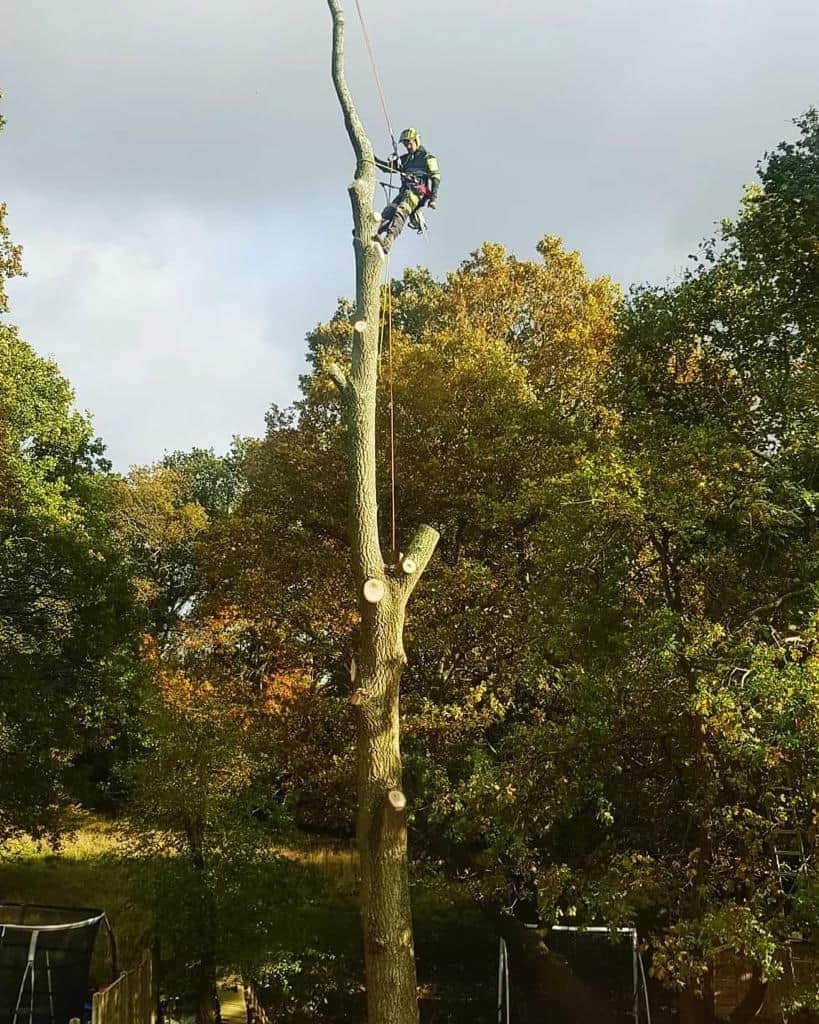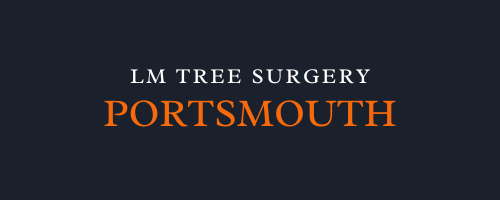Dead wood in trees is more than just an aesthetic issue—it can be a sign of underlying disease and can pose significant risks to both the tree and its surroundings. Proper dead wood removal is an essential part of tree disease management, helping to maintain the health of the tree while also ensuring safety. At LM Tree Surgery Portsmouth, we specialise in professional dead wood removal and disease management services for trees in Portsmouth, Hampshire. In this blog, we’ll explore why dead wood removal is so important, how it ties into overall tree disease management, and why professional tree surgery is key to keeping your trees healthy and safe.
Understanding Dead Wood in Trees
Dead wood refers to branches or parts of a tree that have stopped receiving nutrients, typically because of disease, age, or environmental stress. While it’s natural for trees to develop some dead branches as they mature, an excess of dead wood can indicate serious issues such as fungal infections, pests, or root damage.
Dead wood not only weakens the tree structurally but also increases the risk of disease spreading to healthier parts of the tree. If left unaddressed, this can compromise the entire tree, eventually leading to its decline. Therefore, timely dead wood removal is critical for protecting both the tree and its surrounding environment.
The Importance of Dead Wood Removal
- Preventing Disease Spread
One of the primary reasons for removing dead wood is to prevent the spread of disease. Fungal infections, such as Dutch elm disease or ash dieback, can cause sections of the tree to die. If the affected areas are not removed, the infection can continue to spread throughout the tree, eventually killing it. By removing dead wood, you can help stop the progression of disease and protect the remaining healthy parts of the tree.
- Reducing Safety Risks
Dead branches are weak and prone to falling, especially during storms or high winds. These falling branches can cause serious damage to property, vehicles, or even people. Dead wood removal is an important safety measure, particularly for trees located near homes, roads, or public spaces. Professional removal ensures that these hazardous branches are safely pruned, reducing the risk of accidents.
- Promoting Healthy Growth
Dead wood not only hinders the tree’s overall health but also affects its ability to grow properly. Removing dead or diseased branches allows the tree to focus its energy on new, healthy growth. This can improve the tree’s overall appearance and vitality, as well as extend its lifespan.
- Improving Airflow and Sunlight Penetration
Trees with excessive dead wood often have dense canopies that block sunlight and airflow. This creates a damp, shaded environment that is ideal for the growth of fungi and pests. By removing dead branches, you open up the canopy, allowing more sunlight and air to reach the tree. This reduces the risk of disease and creates a healthier environment for the tree to thrive.
Dead Wood Removal and Tree Disease Management
Dead wood removal is a critical component of a comprehensive tree disease management plan. Here’s how it fits into the broader strategy:
- Early Detection and Diagnosis
At LM Tree Surgery Portsmouth, we begin by thoroughly inspecting the tree to identify signs of disease or decay. Early detection is key to preventing the spread of infections, and dead wood is often the first sign of a problem. Our professional tree surgeons can diagnose the issue and recommend the best course of action, whether it involves pruning, treatment, or removal.
- Targeted Pruning
Once dead wood is identified, targeted pruning is used to remove the affected branches. This helps contain the disease and prevents it from spreading to other parts of the tree. In some cases, additional pruning may be necessary to remove branches that are at risk of infection, ensuring that the tree remains healthy.
- Ongoing Monitoring
Dead wood removal is not a one-time solution—it should be part of an ongoing tree care plan. After removing the dead wood, we monitor the tree’s condition over time to ensure that the disease does not return. Regular inspections allow us to catch potential problems early and address them before they become more serious.
- Tree Preservation
In cases where the disease is advanced, dead wood removal can be part of a larger tree preservation effort. By removing the most affected areas, we can sometimes save a tree that might otherwise need to be felled. This not only preserves the aesthetic and environmental value of the tree but also helps maintain the balance of the local ecosystem.
Why You Should Choose Professional Dead Wood Removal
While removing dead wood may seem like a straightforward task, it requires professional knowledge and equipment to ensure that it’s done safely and effectively. Here’s why you should choose LM Tree Surgery Portsmouth for your dead wood removal needs:
- Expertise: Our team of experienced tree surgeons understands the complexities of tree disease and knows how to perform dead wood removal in a way that promotes the tree’s health. We use advanced techniques to remove dead branches while minimising damage to the rest of the tree.
- Safety: Dead wood removal can be hazardous, especially for large trees or branches located near structures. Our team is fully trained and equipped to handle even the most challenging tree surgery tasks, ensuring the safety of your property and the surrounding area.
- Comprehensive Service: At LM Tree Surgery Portsmouth, we offer a full range of tree care services, including disease diagnosis, pruning, and ongoing maintenance. We provide tailored solutions that address the specific needs of your trees, helping them stay healthy for years to come.
Conclusion
Dead wood removal is a vital part of tree disease management, helping to protect your trees from further damage while ensuring the safety of your property. At LM Tree Surgery Portsmouth, we specialise in professional dead wood removal and tree care services designed to preserve the health and beauty of your trees. If you’ve noticed dead branches on your trees or are concerned about the risk of disease, don’t hesitate to contact us for expert advice and service.
Call us on: 023 8235 3287
Click here to find out more about LM Tree Surgery Portsmouth
Click here to complete our contact form and see how we can help with your tree’s needs.

